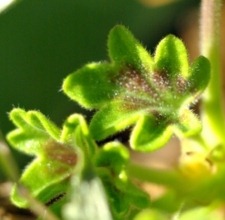Plants of all kinds, including hoyas, are susceptible to a number of pests and diseases. These can lead to a variety of side effects, including spotting and dieback of the leaves. Other factors, primarily environmental ones, may also cause these issues. Addressing these problems early on can prevent serious damage to your hoya. Though meeting every need of the hoya may not be possible, a few steps can prevent serious spotting or other health issues.
About Hoya
-
The Hoya, or wax plant, is a relatively easy plant to grow indoors. It can be grown outdoors, but won’t survive in weather below 40 degrees Fahrenheit. A favorite feature of the hoya plant is its almost unlimited variety of leaf shapes, sizes and colors, and the blooms which get more vibrant as the plant ages. The hoya resists most pests and disease, and prefers nutrient rich, well drained soil and a spot with bright light, but no direct sun.
Stem and Root Rot
-
Stem and root rot occurs in the hoya when a bacteria invades the soil. The most common culprits are Phytophthora, Pythium or Rhizoctonia, and rot most often takes hold when the plant is over watered. In the early stages of root rot, roots will turn gray before drying out and turning to mush. As the disease progresses, dry lesions will begin to develop on the stem and leaves. Root rot can be cured by replacing the potting soil and cutting back on watering.
Cercospora Leaf Spot
-
Caused by the Cercospora beticola fungi, Cercospora leaf spot is one bacterium that can affect the hoya. The bacteria first appear as dark-green or brown spots along the vine, and will eventually spread to the leaves. Once the leaves are infected, they will die, leaving the vine unable to survive. Cercospora is primarily a problem for outdoor hoyas, as that is where the bacteria can move freely. The best way to rid the plant of Cercospora is with an application of fungicide, preferably one that contains copper — azoxystrobin or myclobutanil usually work best.
Pseudomonas cichorii
-
Another bacterial infection, Pseudomonas cichorii can infect a number of leafy plants, including the hoya. The bacteria are normally found in soil, and can easily infect roots and other parts of the plant. It will first appear as small, red-brown lesions on the lower part of the stem and leaves, and will spread from there. If not treated with a fungicide, it will cause leaf death and eventually cause plant death.


Deprecated: strpos(): Passing null to parameter #1 ($haystack) of type string is deprecated in /home/agriviek8Qv/agriviet.net/public_html/wp-includes/comment-template.php on line 2522